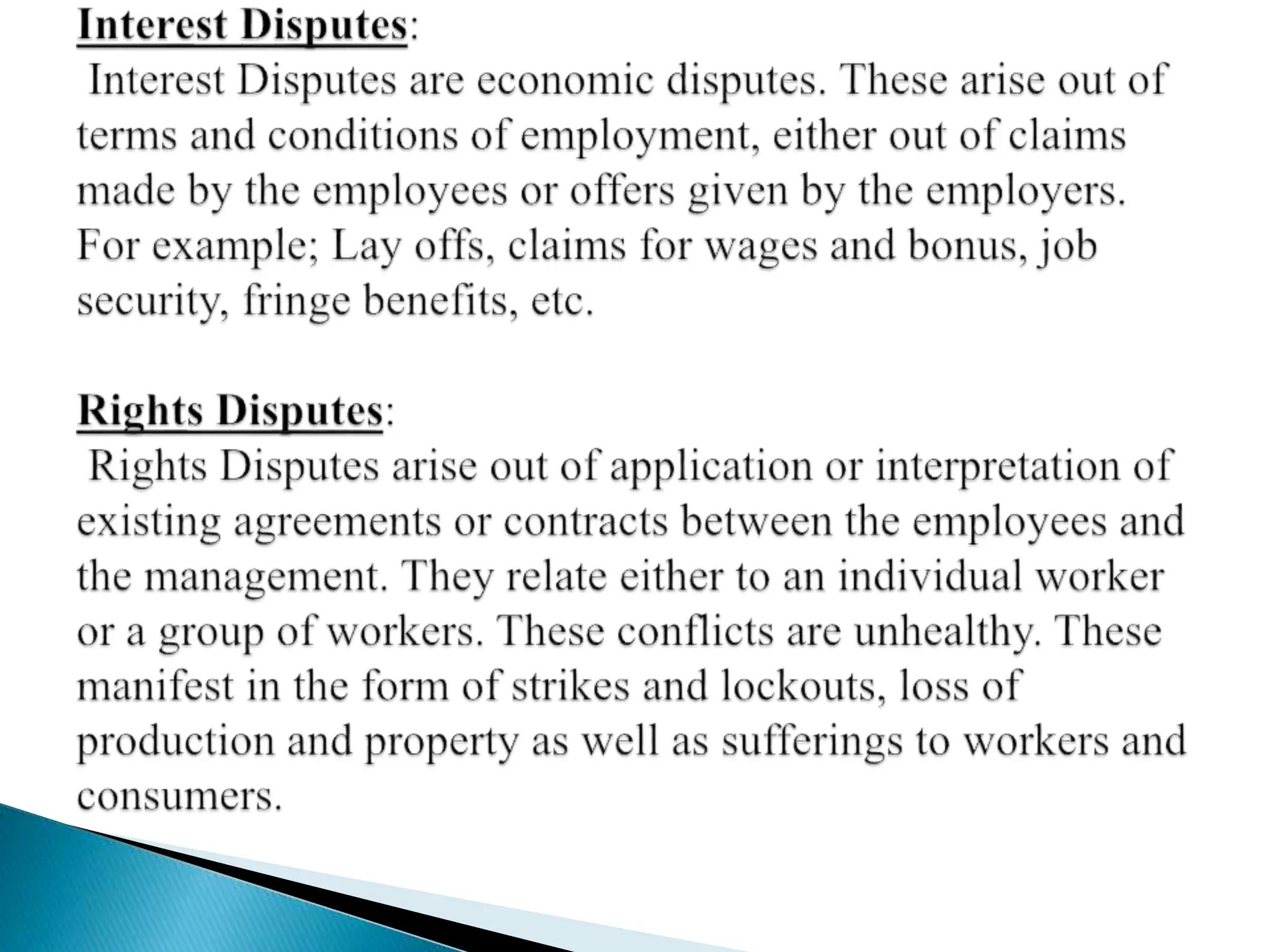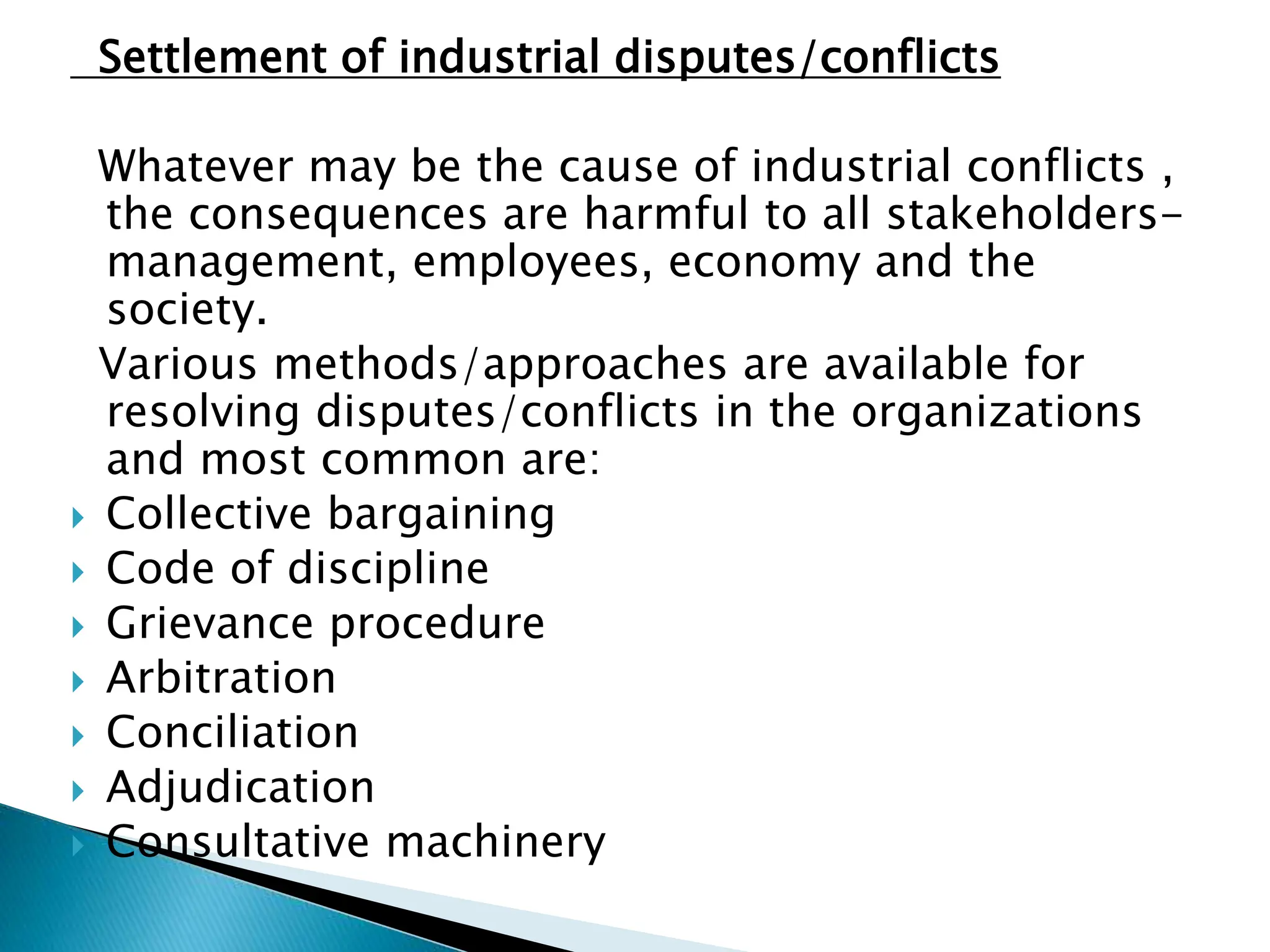This document discusses various methods for preventing and resolving industrial disputes, including works committees, joint management councils, standing orders, codes of discipline, and grievance procedures. It then describes different approaches for settling disputes, such as collective bargaining, arbitration, conciliation, and adjudication. As a case study, it outlines a dispute between workers and management at a bulb manufacturing company regarding the relocation of the factory to a new site and changes to wages and transportation allowances. The workers engaged in a go-slow tactic and later strike to pressure the company, while the company suspended ring leaders and refused most demands.
























